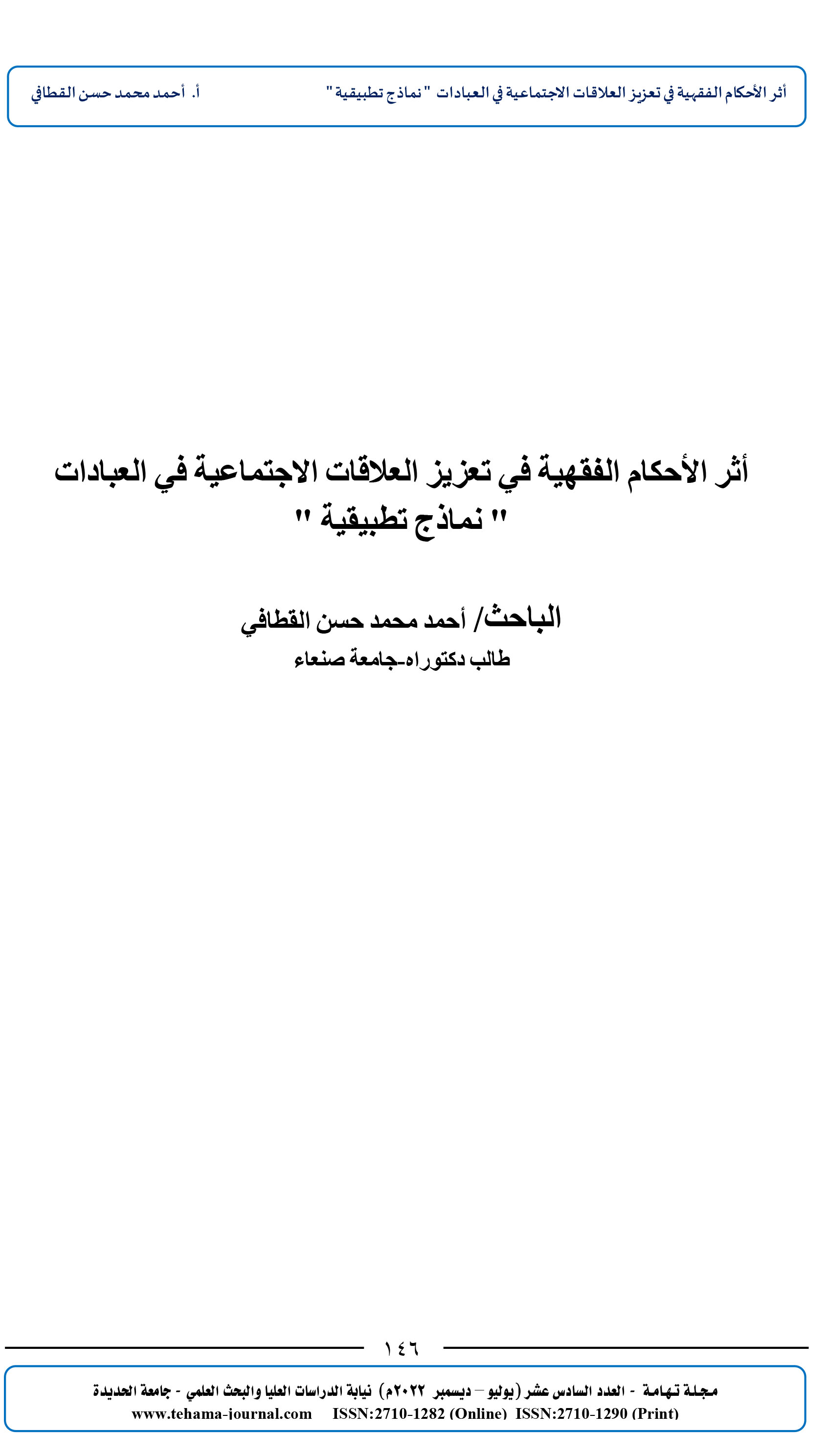The impact of jurisprudence in strengthening social relations in acts of worship
"application models"
DOI:
https://doi.org/10.59846/ojstehama.v16i16.222Keywords:
: Promotion of social relations, and jurisprudenceAbstract
This research aims to define certain jurisprudential provisions relating to social relations in worship and to demonstrate the universality of the provisions of Islamic law is important in the scientific values occupied by the science of jurisprudence and Islamic thought among sharia sciences. and the need for students of science for this kind of judgment, which is closely related to the social life of people and students, The method used is extrapolation in collecting social relations issues, arranging them according to the customary jurisprudential division and analysing them in order to arrive at sound results and come up with the most likely opinion and research divisions:
The first is the theoretical framework "Introduction to study," in which there are two requirements: the first requirement has three sections, section I: Concept of effect, language and terminology, section II: Concept of provisions, language and terminology, section III: Concept of jurisprudence, language and terminology, requirement II, section I: Concept of condolence, language and terminology, section II: Concept of social relations The second subject is the application framework, which contains four requirements. The first requirement is: to enlarge in prayer, the second requirement: the question of settling the line in prayer, the third requirement: the question of congregation prayer, the fourth requirement, and the question of the imamate in prayer.
The research concluded with several findings, most notably that social relations are the ties and mutual effects between individuals, and that Muslims' relationship among themselves is strengthened through the takbeer of ihram that binds creatures to the Creator and vice versa.

Downloads
Published
How to Cite
Issue
Section
License
Copyright (c) 2022 أحمد محمد حسن القطافي

This work is licensed under a Creative Commons Attribution 4.0 International License.




